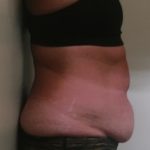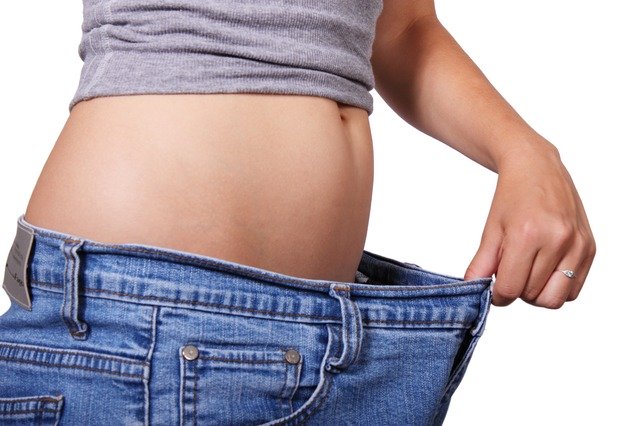Belly fat in women: Dr Treds Home Lipo
What does your waistline say about your health? Read here to find out why belly fat is more common after menopause, the danger it poses — and what to do about it.

An expanding waistline is sometimes considered the price of getting older. For women, this can be especially true after menopause, when body fat tends to shift to the abdomen.
Yet an increase in belly fat does more than make it hard to button up your jeans. Research shows that belly fat also carries serious health risks.
What’s behind belly fat
Your weight is largely determined by three main factors:
- How many calories you consume during the day
- How many calories you burn off through daily exercise
- Your age
If you eat too much and exercise too little, you’re likely to carry excess weight — including belly fat.
Also, your lean muscle mass might diminish with age, while fat increases.
If you are 60 years old and have not been regularly active you most likely have lost 10 percent of your lean muscle mass. At the same time, you will have increased your fat body percentage an additional 10%.
Remember fat replaces the muscle even though you weight might not increase. We call this skinny but fat.
Loss of muscle mass also decreases the rate at which your body uses calories, which can make it more challenging to maintain a healthy weight.
Many women also notice an increase in belly fat as they get older — even if they aren’t gaining weight. This is likely due to a decreasing level of estrogen, which appears to influence where fat is distributed in the body.
The tendency to gain or carry weight around the waist — and have an “apple” rather than a “pear” shape — might have a genetic component as well.
Why belly fat is more than skin deep
The trouble with belly fat is that it’s not limited to the extra layer of padding located just below the skin (subcutaneous fat). It also includes visceral fat — which lies deep inside your abdomen, surrounding your internal organs.
Although subcutaneous fat poses cosmetic concerns, visceral fat is linked with far more dangerous health problems, including:
- Heart disease
- Type 2 diabetes
- High blood pressure
- Abnormal cholesterol
- Breathing problems
Research also associates belly fat with an increased risk of premature death — regardless of overall weight. In fact, some studies have found that even when women were considered a normal weight based on standard body mass index (BMI) measurements, a large waistline increased the risk of dying of cardiovascular disease.
So how do you know if you have too much belly fat? Measure your waist:
- Stand and place a tape measure around your bare stomach, just above your hipbone.
- Pull the tape measure until it fits snugly around you but doesn’t push into your skin. Make sure the tape measure is level all the way around.
- Relax, exhale and measure your waist, resisting the urge to suck in your stomach.
For women, a waist measurement of more than 35 inches indicates an unhealthy concentration of belly fat and a greater risk of health problems.
For men, a waist circumference of more than 40 inches indicates unhealthy concentration of belly and a greater risk of health problems
Trimming the fat
You can tone abdominal muscles with crunches or other targeted abdominal exercises, but just doing these exercises won’t get rid of belly fat. However, visceral fat responds to the same diet and exercise strategies that help you shed excess pounds and lower your total body fat. To battle belly fat:
- Eat a healthy diet.Focus on plant-based foods, such as fruits, vegetables and whole grains, and choose lean sources of protein and low-fat dairy products
- Replace sugary beverages.Drink water or beverages without sweeteners. Artificial sweetener is a no no and studies have shown that artificial sweeteners can cause an insulin spike even though there are zero calories. Insulin spikes always lead to weight gain.
- Keep portion sizes in check. At home, slim down your portion sizes. In restaurants, share meals — or eat half your meal and take the rest home.
- Include physical activity in your daily routine.Try brisk walking, for at least 150 minutes a week or vigorous aerobic activity, such as running, for at least 75 minutes a week.
If you use a step counter, remember that it takes an average of 10,000 steps a day to prevent weight gain. Some studies indicate it might take 15,000 steps a day to prevent the regain of weight after significant weight loss.
Strength training exercises also are recommended at least twice a week. If you want to lose weight or meet specific fitness goals, you might need to exercise more.
If all this diet and exercise seems unattainable or you just want some help to kick start your weight loss goals than there are also some new non invasive procedures that target subcutaneous fat available.
But you must choose wisely, some of these can hurt you and damage your skin and internal fatty tissue in an attempt to reduce the volume.
My suggestion is to look at Low level Laser or RED light therapy These are FDA machines cleared as safe. They target the subcutaneous fat only and they work by causing microscopic pores to form on the fat cells and the entire contents is released in only 30 minutes.
You are then encouraged to drink lots of water to flush out the fatty acids and gentle exercise is recommended. Some persons find that whole body vibration machines are an excellent way to burn those released calories. They do not kill or damage the fat cells in any way. With that said in order keep the inches off you will need to maintain a healthy diet and exercise afterward.

